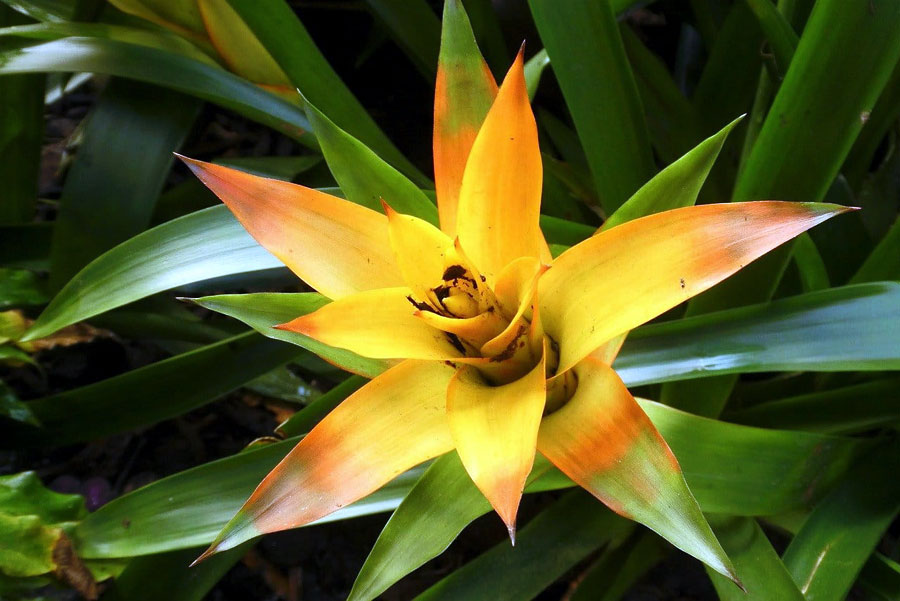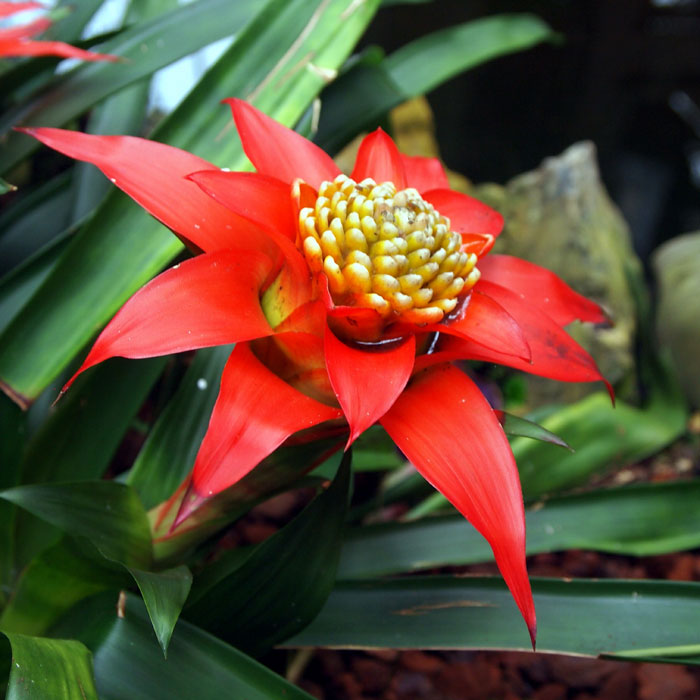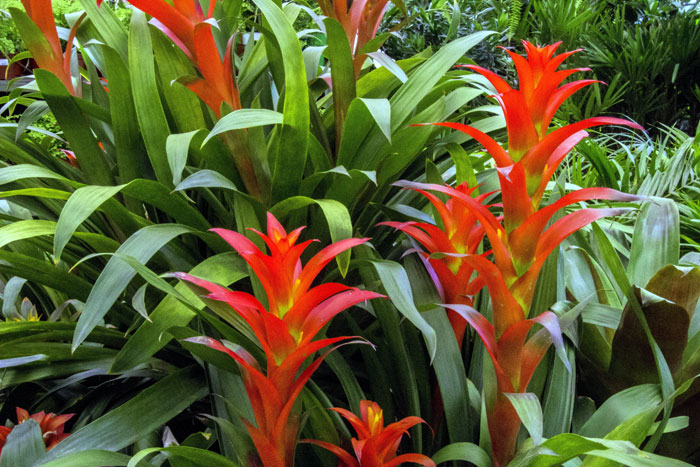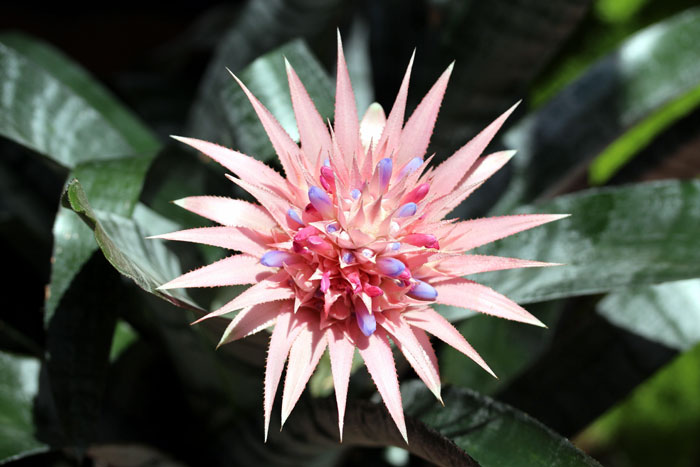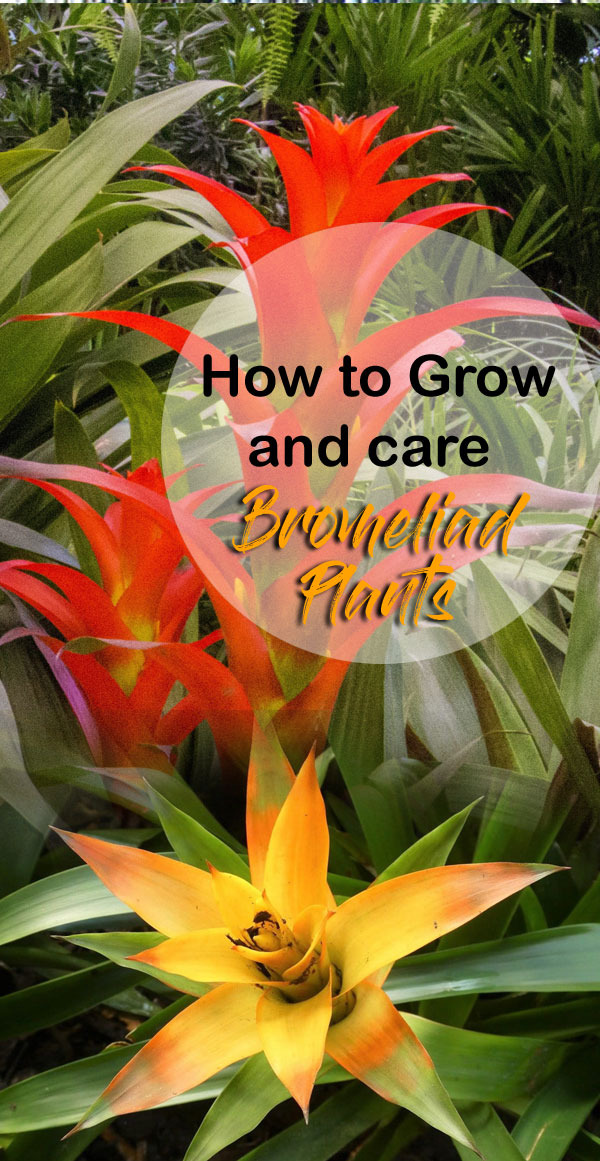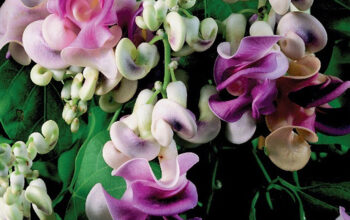Bromeliad Plant (bromeliaceae)
There are 75 genera and 3590 species of Bromeliaceae (the bromeliads, Earth Star), most of which are in the tropical Americas, with Pitcairnia feliciana being an exception in West Africa. A typical characteristic of the bromeliad plant is its sword-shaped leaves and bright blue blooms, which are actually bracts surrounding an insignificant flower. Guzmania plants are perennial plants and belong to the bromeliad family.
Rather than growing on the ground, they naturally grow on the bark of large trees in the tropical rainforests. They attach themselves to their hosts by way of their roots. Their moisture comes from a central “tank” or “vat” in the center of the rosette of leaves that fills with water when it rains. These tanks are sometimes used to raise frogs’ young in the wild. Once bromeliad flowers have bloomed, they die back, so they’re not long-lived houseplants. In addition, they create new plants at the base that can be potted up and grown on.
Overview Bromeliad Plant
Scientific name Bromeliaceae
Common name Earth Star
Plant type Perennials flowering plants
Sun Full sun to partial shade
Soil Fast-draining potting mix
Soil pH 5.0- 6.0
Flower colors Green, Purple, Orange, Red, and Yellow
Blooming time Bloom only once in a lifetime
Zone 9-11
How to Grow and Care Bromeliad Plants
The maturity period for bromeliads is one to three years before they become flowering plants. Growing a bromeliad as a houseplant is easy and is a fun way to bring color and texture to your home.
Growing from seeds
The seeds should germinate in approximately two weeks under the right conditions, but in some cases, it may take longer. These seeds do not usually remain viable for long. They are viable for between 4 weeks and 3 months, depending on their family and storage methods. Seeds stored properly will last longer. Keeping seeds in paper boxes or envelopes with the lowest humidity possible will make them last longer. Plant your seeds as soon as possible in order to avoid letting them go bad.
Growing from cuttings
In the months following the flower’s death, the plant also begins to die. Nonetheless, the parent plant will propagate one or several pups at its base. They can be carefully cut from the parent plant when they reach about one-third of their size and potted individually in individual containers once they reach that size. Usually, pups have at least a few roots, but if not, they will form roots once they are potted into their new containers.
Sunlight
Typically, bromeliads grow well in bright indirect sunlight. It’s possible for yellowish plants to receive too much light, and dark green or elongated plants to receive too little. If other conditions are appropriate, increasing light exposure can encourage flowers to bloom.
Soil
The best soil for growing bromeliads indoors is a fast-draining potting mix that holds moisture but can also drain. A mixture of about two-thirds peat and one-third sand is often optimal for cultivation. As an alternative to orchid mix, you can use charcoal or soilless potting mix.
Watering
Bromeliads need to be watered once a week on average. Although bromeliads benefit from moist, tropical environments, some are capable of coping with drought conditions, but not wet soil. It is not advisable to let the plant sit in standing water, as bromeliads are susceptible to root rot. The soil as well as the cup needs to be watered, but you should only fill the cup halfway to prevent rot.
Temperature and Humidity
Planting bromeliads in pots that can be brought inside in winter is an option if you want these plants in your landscape but live in an area with freezing temperatures. The ideal temperature for bromeliads is 55 to 80 degrees Fahrenheit. It is generally not a good idea to expose cold-hardy types to temperatures below 40 degrees, even if they can tolerate temperatures as low as 20 degrees.
The best growing conditions for bromeliads occur when the relative humidity is between 40 and 60%. By misting plants with water often during the day, you can increase the humidity around them.
Fertilizer
The bromeliad does not require heavy feeding. Although you can grow a very healthy and colorful plant in the lawn without fertilizing, if you feed it carefully, the plant will grow much better and be stronger. You should only fertilize the plants in the warmer months with a weak solution of liquid fertilizer. It is best not to feed mature plants during the winter or when they are blooming. Plant urns with low-nitrogen fertilizers such as 10-20-20 or with balanced fertilizers such as 20-20-20 diluted to half strength.
Read also:
How to grow Dieffenbachia houseplants. Organic cucumber growing and care tips. Rhipsalis plant growing and care guide. How to grow Healthy roses in your garden. Foxtail fern growing in your home garden. Pitcher plant (insect-eating plant) growing guide. Winter heath plant growing indoors. 07 gorgeous plants for your spring garden. Growing cyclamen plants at home. Brussels sprouts growing and care tips.
For pin:

